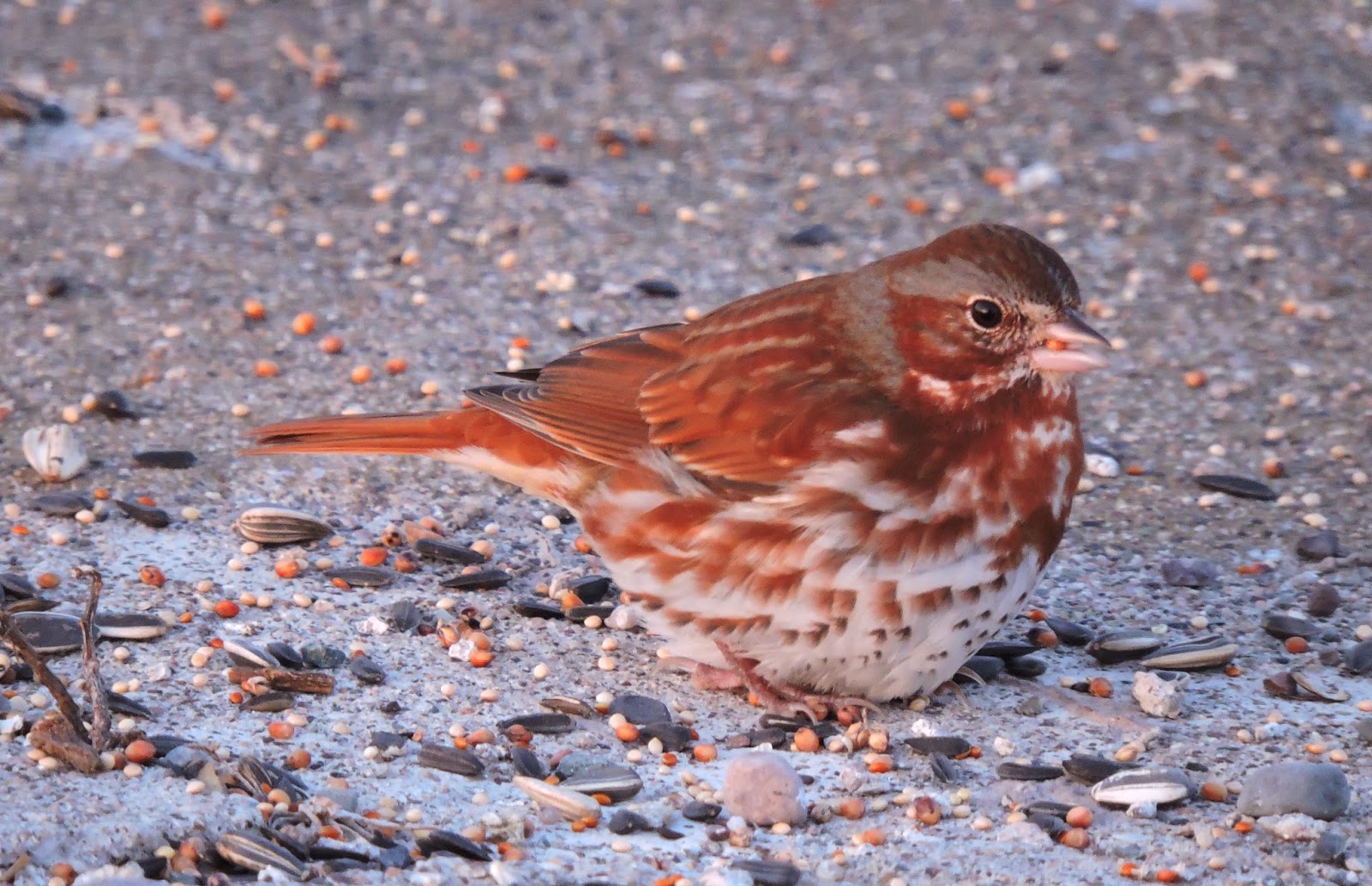High Water Extravaganza
 |
| Mallard |
The St. John River is a migration route for many birds. Waterfowl, shorebirds, raptors, and song birds use it as a directional aid in their quest to return 'home' to nest and spend the summer. In high water (flood conditions) the many flooded fields in the Maugerville/Sheffield/Jemseg areas are used by waterfowl and other water birds as staging areas where they rest, feed and congregate. Route 105 runs along the river and is often close to both the river and the flooded fields. This makes it a wonderful birding area in high water.
Today, we birded the area and found hundreds and hundreds of ducks and geese as well as many other water-loving birds. The most numerous were Ring-billed Gulls, Ring-necked Ducks, Black Ducks and Mallards. There were also many Wood Ducks, Northern Shovellers, Northern Pintail, Green-winged Teal, Blue-winged Teal, Greater and Lesser Scaup, American Wigeon and Common Goldeneye. Canada Geese were in large numbers. That is an amazing array of species and numbers!
 |
| Ring-necked Ducks |
 |
| Ring-billed Gull |
There was also an unusual duck present, a Red-breasted Merganser. This is a sea duck and it is uncommon to find it on the river. It does happen occasionally during migration. I expect the strong SSW winds we had on Thursday brought a number of sea ducks up river and a few of them landed to rest and feed.
 |
| Red-breasted Merganser |
Besides the numerous Ring-billed Gulls, we found 2 Lesser Black-backed Gulls, several Bonaparte's Gulls and a Black-headed Gull. The Bonaparte's and Black-headed are rare inland, preferring salt water. The Bonaparte's is relatively common in the Bay of Fundy. The Black-headed is rare anywhere in New Brunswick. The Lesser Black-backed Gull is also uncommon here.
 |
| Bonaparte's Gull |
Other interesting birds seen include Wilson's Snipe, 1 Lesser Yellowlegs, 2 Greater Yellowlegs, and a Killdeer. There were a few raptors searching for food or looking for nesting sites. We saw 1 Merlin, 1 Northern Harrier, 3 Bald Eagles and many Osprey. In one location a Great Horned Owl was peacefully sitting on its nest.
 |
| Wilson's Snipe |
 |
Great Horned Owl on Nest
|
When the water is very high our deer and moose are forced to high ground. Unfortunately for them, that is often on or near the road. Pictured below is a yearling cow moose which found itself with no place to go this morning.
 |
| Yearling Cow Moose |

































